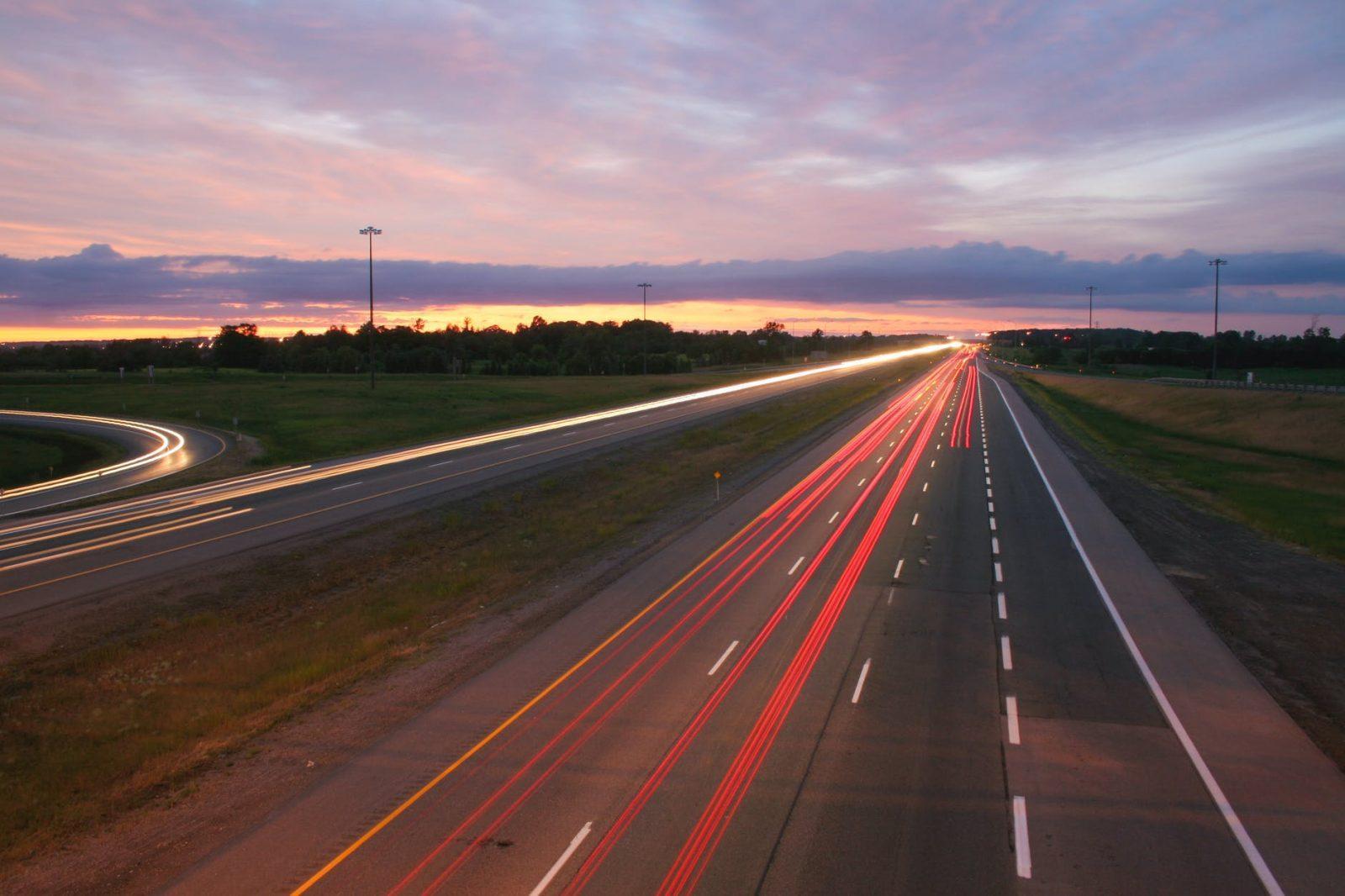How is technology helping transportation and logistics keep up with the accelerating pace of change? Experts share their insights in this special Modex 2022 preview.
Roundtable participants:
| Don DeLash | Raj Patel | Joe Wilkinson |
During the past two years, even those who had never heard the term “supply chain” have seen—and personally experienced—just how much transportation and logistics affects our daily lives. It’s become clearer than ever that when the going gets tough, smart strategies supported by advanced technology are critical for tackling transportation and logistics challenges.
To find out what the future holds in this regard, DC Velocity Group Editorial Director David Maloney recently gathered three experts from companies participating in the DC Velocity Transportation & Logistics Theater at the upcoming Modex 2022 show in Atlanta to discuss a range of topics, including how technology can help to keep merchandise moving and provide customers with the service they want.
Q: Are there some common-sense steps shippers can take to alleviate the impact of the transportation bottlenecks the industry is experiencing?
Joe Wilkinson – enVista: The most common strategy for easing capacity constraints (and cost pressure) is carrier diversification. While there can be an initial hard-dollar cost to implementing carrier diversification, those initial investments pay dividends in the future and serve as insurance when capacity shrinks and more options are needed. Spreading volumes across modes is another option. Positioning inventory in stores via truckload/LTL store replenishment can, in some cases, enable ship-from-store fulfillment. This needs to be enabled by technology, staff, and facilities. But where it can be achieved, pressure can be relieved in the first and middle miles.
Raj Patel – Blue Yonder: One thing we have learned is that supply chain disruptions are a constant, and they seem to be happening more often. Take a look at last year’s Suez Canal situation or the Port of Yantian closure. To succeed, organizations need to have visibility into all aspects of their supply chain. Without this end-to-end visibility, how can they get ahead of issues in a timely manner and properly address them? Organizations also need to learn how to leverage that visibility to anticipate future issues and deduce solutions.
I have hope that this surge will stabilize over time and allow companies to catch their breath, because this system isn’t sustainable the way it’s currently operating. In the meantime, using labor management tools can help forecast shortages on the horizon and ensure employees are engaged and incentivized in their day-to-day work, which will help keep goods flowing. In the case of another three- to six-month global shutdown, extensive government involvement would be needed to keep manufacturing and the supply chain moving.
Q: What are the most significant changes you’ve seen in your industry over the past 20 years?
Raj Patel – Blue Yonder: The first is going from a “push” supply chain to a customer-centric supply chain. Consumers are in control now. They dictate what they want, where they want it, how they want it, and the price they are willing to pay. This is very different from 20 years ago, when retailers would use planning and forecasting to predict what they thought customers were looking for and then pushed that product out.
The second is the change in technology strategy. Twenty years ago, it was all about a single vendor/provider ecosystem, on-premise deployment, and long-lasting relationships. Then it went to “best of breed,” but still on-premise and with shorter relationships. Today, you are looking at going back to a single vendor in most cases, but in a cloud/SaaS model, and with shorter contract terms, as the cost to change is lower than for on-premise.
Q: Has the rise of e-commerce significantly changed transportation?
Joe Wilkinson – enVista: The rise of e-commerce is not a new phenomenon. Each year, experts make what seem to be wildly aggressive projections about peak volumes, and each year, the market surprises to the upside.
E-commerce has driven down transit time expectations dramatically. In the ’70s and ’80s, catalog order delivery times were measured in weeks. Now, we’re at a two-day standard, with same-day delivery expected in a lot of metro areas. All of this while residential deliveries have driven delivery densities down and drive time between stops up. This has had the effect of making shippers’ delivery times a big part of their brand identity and has forced transportation teams to continually optimize their processes to protect the brand’s reputation.
Q: How can real-time shipment information improve the customer experience?
Don DeLash – SICK: As the pandemic has continued to accelerate e-commerce and same-day delivery demands, the evolution of logistics technologies and processes has also accelerated to keep pace. An emerging trend is the implementation of data-capture and information technologies that support dynamic real-time package routing and routing adjustments. By integrating unique package identifiers, whether in the form of package or label data, 1D or 2D bar codes, or RFID, shippers gain the ability to make in-transit decisions about package delivery destinations.
For example, if a retailer ships a parcel from Pittsburgh to an online customer in Seattle, but while in transit that item becomes available from a facility (such as a store or warehouse) locally [in the Seattle area], the retailer can re-route that package to a customer who ordered the same product in Columbus, Ohio, or to a store in Detroit that is low on inventory of that item. When this type of dynamic transportation management is implemented across a network, the substantial improvement in customer experience becomes evident.
Raj Patel – Blue Yonder: Increased use of technological solutions like control towers provides real-time data and visibility, allowing companies to better control product flow. In a world of constant disruptions and crises, this technology offers early detection of problems and quick corrective actions that help keep products in stock and customer experiences positive.
All in all, companies will be leveraging data more than ever to determine what to make for consumers, where to manufacture and at what cost, and what service it or its third-party logistics providers (3PLs) can afford to offer. Preparation starts with what technology you have, and determining whether the data is being shared across the enterprise and decisions are being made holistically and in real time versus in silos. Those that have figured that out will succeed and continue to prosper, while others will struggle to make daily tactical decisions that will impact bottom lines.
Q: As you’ve just noted, customers expect quicker deliveries now. Can warehouse technology speed truck turns at facilities?
Don DeLash – SICK: Companies in the supply chain continue to look for ways to speed trailer loading and unloading at warehouses and distribution centers. Existing, proven methods, such as inbound product ID and destination labeling, support cross-dock and automated storage and retrieval systems. These technologies lead to greater agility and improved customer satisfaction. With the broader adoption of robotics in warehouse operations, automated methods for trailer loading and unloading using robotics are being designed and tested at an increasing pace.
Raj Patel – Blue Yonder: Deploying warehouse management and labor management technologies was a growing strategy before the Covid-19 pandemic, but that seems to have accelerated even further since the pandemic began. These technologies allow employers to consider engineering standard constraints and other warehouse-related constraints when they incentivize, monitor, and schedule their workforce. More efficient workforces lead to quicker turns, shorter wait times at docks, and more efficient transportation.
Q: What are some ways to improve the visibility of goods in transit?
Don DeLash – SICK: Asset-tracking technologies coupled with cloud-based access to information provide the platform from which visibility of goods in transit can be achieved at increased levels of specificity in terms of timeliness and accuracy. Underlying data-capture and analytics systems can provide specific information about products and items in terms of identification and condition. Proven sensing technology provides information about package or freight condition, movement, temperature, handling, and other characteristics. When all this data sits on a cloud-based analytics and user interface platform, visibility and efficiency can be greatly enhanced.
Raj Patel – Blue Yonder: Control towers are central to unlocking deep real-time visibility into goods in transit. They centralize visibility across companies’ entire global networks, making it possible to see where shipments are sitting, whether they’ll be delayed, and even at which specific ports and warehouses they are.
Q: Can good transportation management improve cubing and utilization?
Joe Wilkinson – enVista: Tier 1 transportation management systems (TMS) have the ability to create a blueprint for how to effectively load your trailer or container. This requires very accurate data for eaches, cases, pallets, and so forth. But you do not have to go this route in order to increase your trailer utilization. With accurate skid, cube, or weight data, you can analyze your lane volume and determine your trailer-utilization percentage. This will allow you to see the delta from your acceptable threshold and begin working to improve your bracket pricing, load scheduling, and product allocation in order to capitalize on the opportunity.
Q: How will artificial intelligence (AI) and machine learning affect the future design of transportation systems?
Joe Wilkinson – enVista: The two key areas where AI or machine learning can have the quickest impact on transportation management systems are data recognition and exception management. Being able to have the TMS recognize bad or missing data, and then know how to correct it or who to notify, has a direct impact on service and labor costs.
Exception management is the key to a successful transportation operation, and increasing your ability to predetermine which shipments will be late or might be missing will be a differentiator in the marketplace. Being able to link past carrier, lane, seasonal performance, and other data to accurately depict transit and on-time estimates allows for better decision-making and the ability to be proactive.
Link: https://www.dcvelocity.com/articles/53852-keeping-the-supply-chain-moving-in-turbulent-times?utm_source=pocket_mylist
Source: https://www.dcvelocity.com
















Leave a Reply